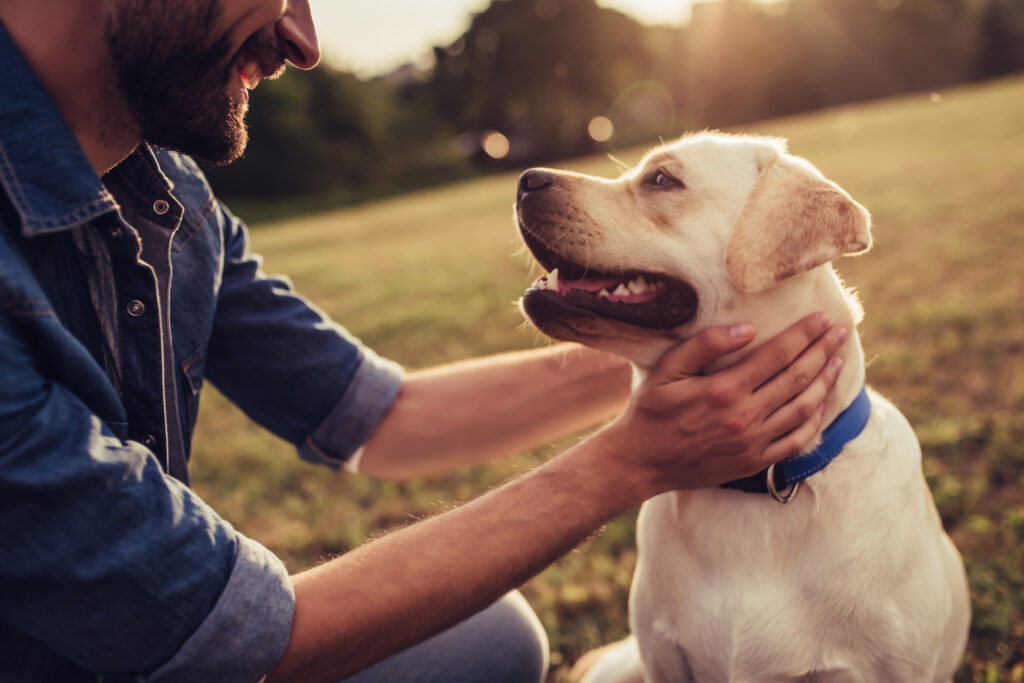February 17 2022
A nose that knows: how diabetes alert dogs help to save lives.
Elisa Forsman from Finland specializes in training dogs to detect blood-glucose changes experienced by people with diabetes. We asked her to explain some of the secrets to this life-saving practice.

Please could you describe for our readers what exactly a diabetes alert dog is trained to do.
Dogs have a phenomenal sense of smell, and what we know is that they can be trained to detect subtle changes in the scent of someone with diabetes as that person’s blood glucose goes too high or too low. The breath from the mouth is the most significant way to detect the change, but the scent also comes out from the skin in a way that people would not be able to notice.
What’s fascinating about diabetes alert dogs is that they can detect changes in a person’s blood glucose before that person does, and before the change would even register on a blood-glucose meter or sensor. That’s how keen a dog’s sense of smell is. They can detect hypoglycemia, hyperglycemia, sudden rises or falls in blood glucose, and even the onset of ketoacidosis.
How do you train the dogs to do all this?
A diabetes alert dog is typically trained alongside the individual they will be taking care of, as the causation and experience of changes in blood glucose vary from person to person. We activate the dog to behave in a certain way when their owner’s blood glucose values go up or down outside of an accepted range.
For example, we teach the dog to push its nose against the person’s body in a firm manner. It’s important that the action taken by the dog is impossible to ignore, as it may need to be done while the person is asleep and experiencing a hypoglycemic episode.
“What’s interesting is that it’s not so much about the breed – it’s about the individual dog. Some are simply better at being trained than others.”
We keep it simple for the dog by teaching it only one alerting action to perform, no matter if it is detecting a high or low blood-glucose episode. The person with diabetes should always check their values after being alerted by the dog, so it’s not necessary for the animal to learn different actions for different events.
We also teach the dogs to bring things to their owners. Depending on the relationship or what the dog detects, it may bring an insulin pen, something to eat, or even a phone.
Is there a specific breed of dog that is best for this work?
All dogs have a nose, and they can all learn pretty quickly and effectively how to use it when they need to! What’s interesting is that it’s not so much about the breed – it’s about the individual dog. Some are simply better at being trained than others.
It’s important though for a diabetes alert dog to have a calm and well-behaved nature, so it’s best to go for a breed that is known for these traits. If the end goal is to have a dog that likes to be with and take care of people, then it’s better to have a breed for which these things come naturally – rather than one that prefers to go running and hunting in the forest!
This is why I’ve always had a soft spot for training Labradors. Other dogs that make great assistance animals are Retrievers and Spaniels. With these breeds the risk of an individual dog being difficult to train is much lower than with some other more independent breeds.
But no matter what breed the dog is, it’s important for it to have healthy parents, a good pedigree, and to come from a knowledgeable breeder who has paid attention to fostering strong and confident puppies. There are so many different things that influence how a dog will be when it’s older.

Does the dog need to be trained from when it’s very young? Or can it learn when older too?
There are essentially two alternative routes for training a diabetes alert dog.
The first is for the dog to be trained from birth by someone such as myself, and then at the age of approximately one year to be placed with a family that needs it. While this is certainly a great method, the dog ends up being very valuable and thus expensive for the new owner to take home. It’s not uncommon for a diabetes alert dog trained from birth in Finland to fetch EUR 15,000. The other issue is that there is far greater demand for the dogs than one can meet by training them in this way.
The second route is therefore more viable. This is a course format, where a family brings its own dog to regular training sessions and we teach it to become a diabetes alert dog. We started doing this in 2012, as a mix of practical training once a month and theoretical training online. It takes approximately 18 months for a dog to be trained.
Please tell us something about your history with dogs, and how you specifically got into training diabetes alert dogs.
Dogs have always been in my life. My family had hunting dogs when I was a child, then I got my own dogs as soon as I left home in my late teens. Today I have five Labradors at home.
I started studying to be a dog carer in 2005, and then continued my studies in order to become a dog trainer too. At that time I was working with assistance dogs that help people who have reduced mobility.
In 2009, an acquaintance from dog circles in Finland contacted me upon her return from living in the United States. Both she and her son have diabetes, and while in the US they had become familiar with diabetes alert dogs. That same year we together established the Finnish non-profit association Hypokoira (Hypodogs), which is now Finland’s go-to organization for diabetes alert dogs.
Find the latest articles from Brighter at Latest from us.
